 Summer heat and lack of rain have lowered the water levels in the Pedernales River. Bee Creek crossing on Wolf Mountain Trail usually has water but for the first time this year it is dry.
Summer heat and lack of rain have lowered the water levels in the Pedernales River. Bee Creek crossing on Wolf Mountain Trail usually has water but for the first time this year it is dry.I arrived at Hackenburg Creek by 6:20 AM. Only four bird species were singing. By 8 AM I arrived at the Tobacco Creek Seep nest box 5. In the bird world this is the corner station, only instead of gasoline, water is being served. I saw the following families: White-eyed Vireo, Northern Cardinal, Carolina Wren, Carolina Chickadee, and the Louisiana Waterthrush (2 adults and 1 fledgling) come for drinks. I also saw a beautiful male Golden-cheeked Warbler come down to bathe.

I was also greeted by a male Acadian Flycatcher singing loudly: PEET-ssah. This species hawks insects from the middle canopy so seeing it on territory is relatively easy. I was surprised to hear a Great-crested Flycatcher at site 6. On my bikeride today I stopped to identify, visual and audio, a Rufous-crowned Sparrow. At East Park Boundary I had a fledgling Louisiana Waterthrush approach within 20 feet of me. It was rather curious. The Green Kingfisher gave me a fleeting glance as it bolted upstream. I also saw an Orchard Oriole singing atop a cypress tree along the Pedernales River and a new b
 orn fawn could be heard crying for its mother across the river.
orn fawn could be heard crying for its mother across the river.At my final nest box site #4, I saw a male and female Blue Grosbeak. This guy was a first year male with blue mostly confined to its head. To finish the day I cooled off in the Pedernales River like many other people did.
On my hikes today I noticed a new creature to contend with, this huge spider who spins its web across trails. Lucky for me I have a birder's eye.

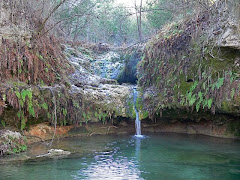
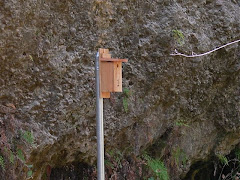
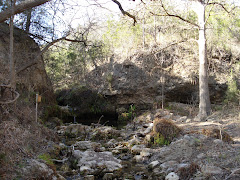
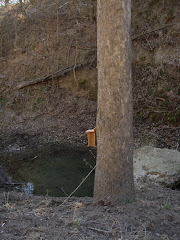
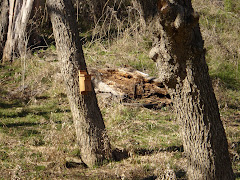




No comments:
Post a Comment